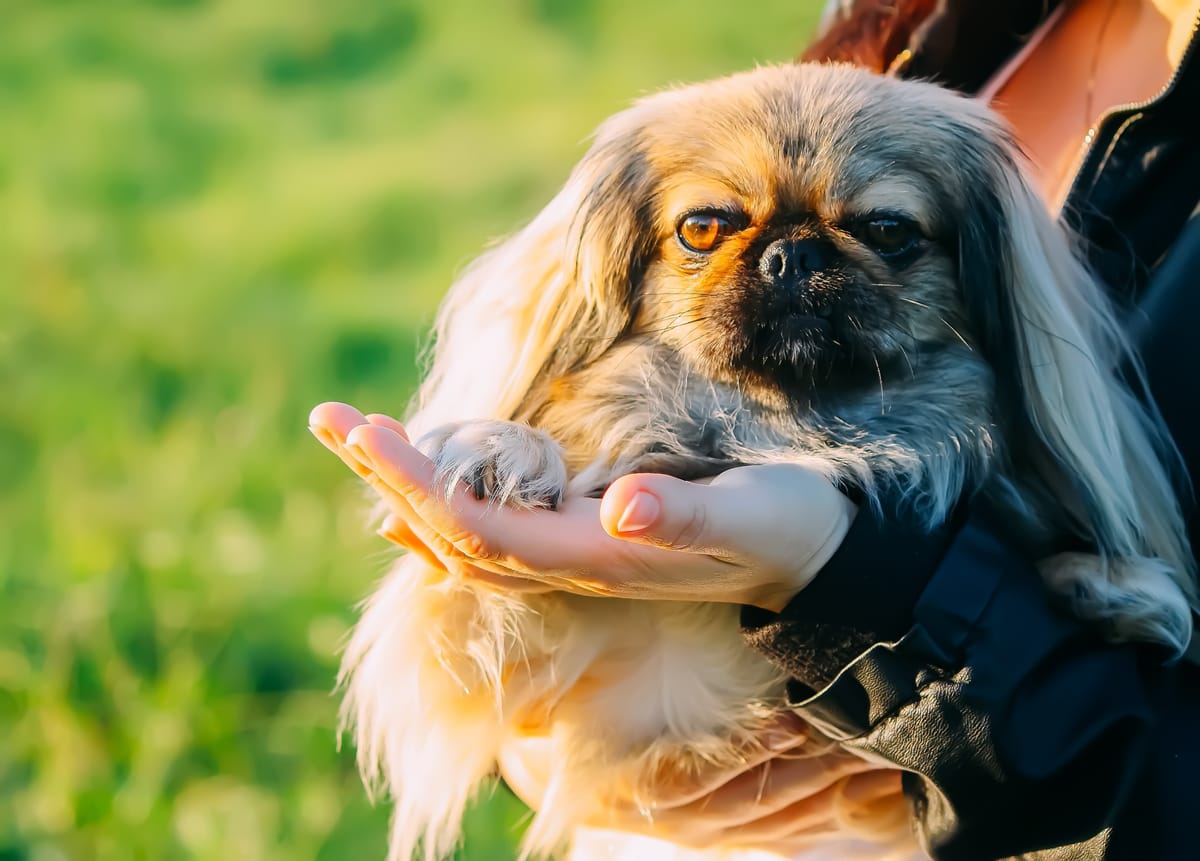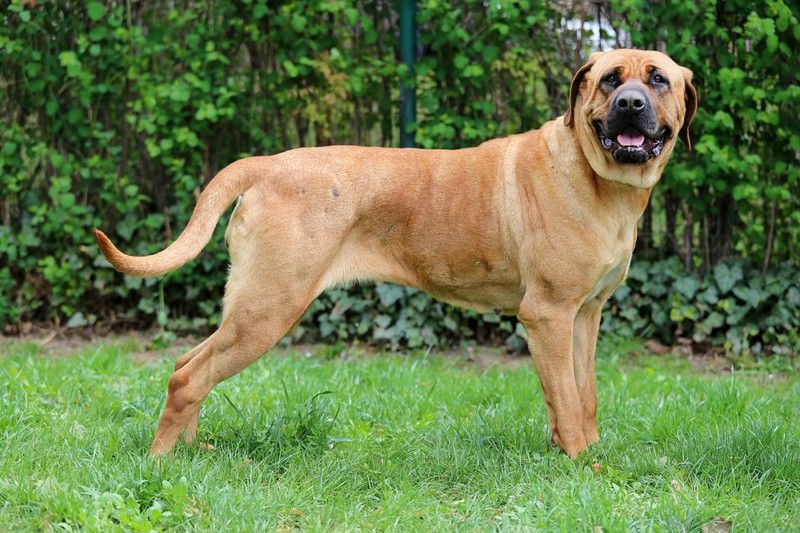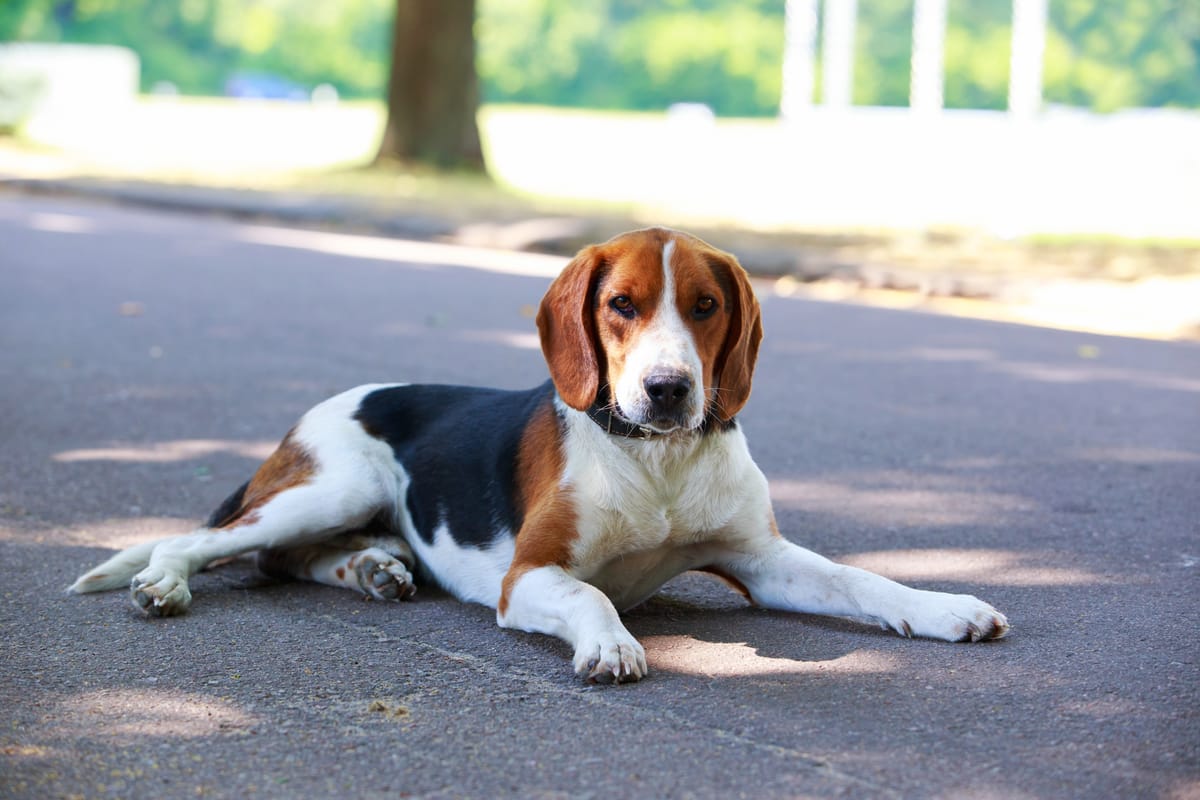The Thai Ridgeback is a rare and ancient breed of dog that originated in Thailand. These dogs were originally bred for hunting and guarding, and they have a muscular build and a distinctive ridge of hair along their backs. They are known for their loyalty and intelligence, and they make excellent companions for active families.
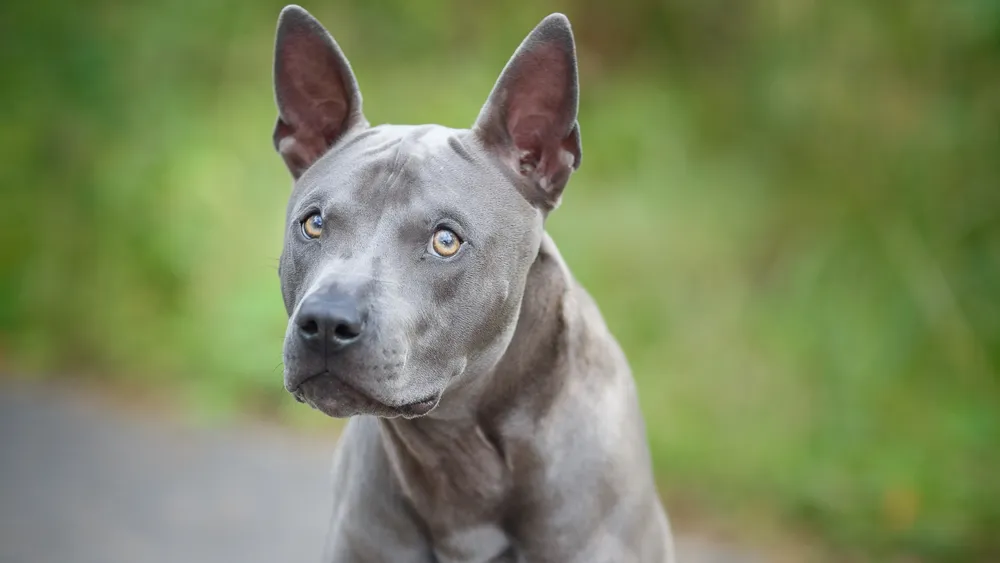
The Thai Ridgeback is a medium-sized dog that typically weighs between 35 and 75 pounds. They have short, smooth coats that come in a variety of colors, including black, blue, red, and fawn. Their most distinctive feature is the ridge of hair along their backs, which grows in the opposite direction of the rest of their coat. This ridge is caused by a unique genetic mutation that is only found in this breed.
Despite their rarity, Thai Ridgebacks are gaining popularity in the United States and other parts of the world. They are known for their independent and strong-willed personalities, and they require a firm and consistent hand in training. However, with proper socialization and training, they can be loyal and affectionate companions for their families. In the following article, we will explore the history, characteristics, and care requirements of the Thai Ridgeback breed.
Breed Overview
The Thai Ridgeback is a medium-sized dog breed that originated in Thailand. They are known for their muscular and athletic build, as well as their distinctive wedge-shaped head and short, smooth coat.
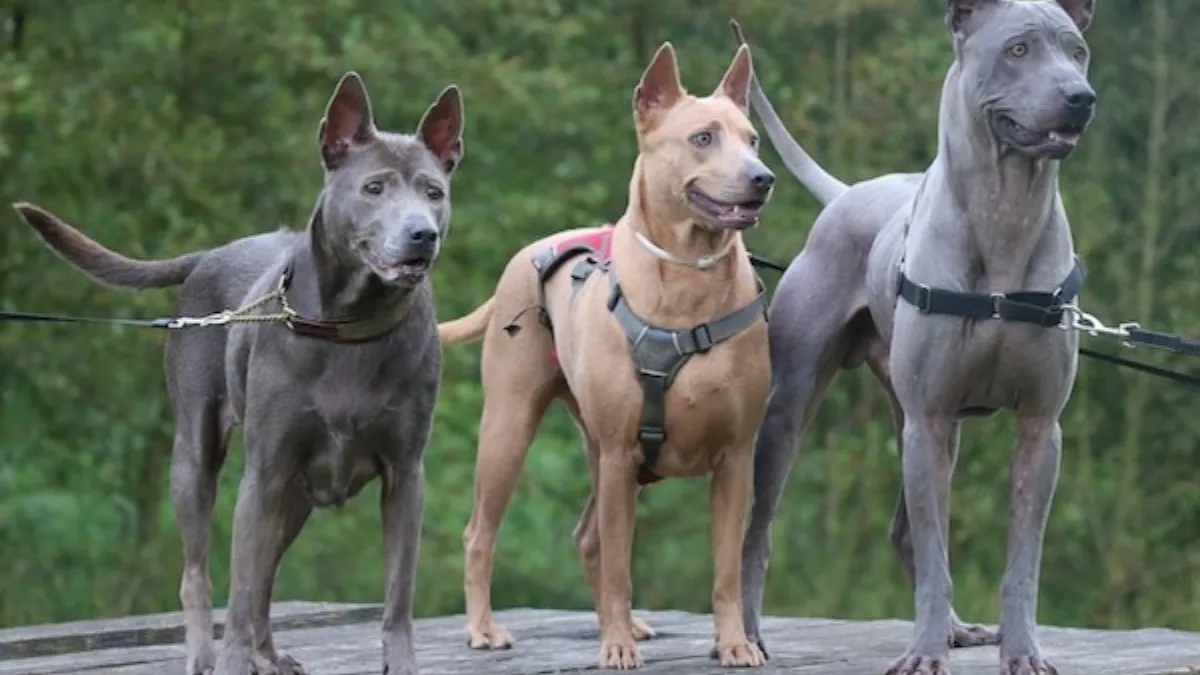
Origin and History
The Thai Ridgeback is believed to have originated in Thailand over 4,000 years ago. They were originally used as hunting and guard dogs, and were highly valued by the Thai people. The breed was almost extinct by the 20th century but was saved by a group of breeders who worked to preserve the breed and promote its popularity.
Breed Characteristics
The Thai Ridgeback typically weighs between 35 to 75 pounds and stands between 20 to 24 inches tall at the shoulder. They have a short, smooth coat that can come in a variety of colors, including black, blue, red, and fawn. One of their most distinctive features is the ridge of hair that runs down their back in the opposite direction of the rest of their coat.
Thai Ridgebacks are known for their intelligence and loyalty, but can also be independent and stubborn at times. They require regular exercise and mental stimulation to stay healthy and happy. Due to their history as hunting dogs, they may have a strong prey drive and should be socialized with other animals from a young age.
In conclusion, the Thai Ridgeback is a unique and fascinating dog breed with a rich history and distinctive physical characteristics. They make loyal and loving companions for those who are willing to put in the time and effort to properly care for them.

Temperament and Behavior
Personality
The Thai Ridgeback is known for its loyal, intelligent, and protective personality. They are also known to be stubborn and independent, which can make training a challenge. However, with proper socialization and training, they can become well-behaved and obedient pets.
Socialization
Socialization is crucial for the Thai Ridgeback. It is important to expose them to different people, animals, and environments from a young age to prevent them from becoming overly wary or aggressive. They tend to do well with children and other dogs if they are properly socialized. However, they may have a high prey drive and may not do well with cats or other small animals.
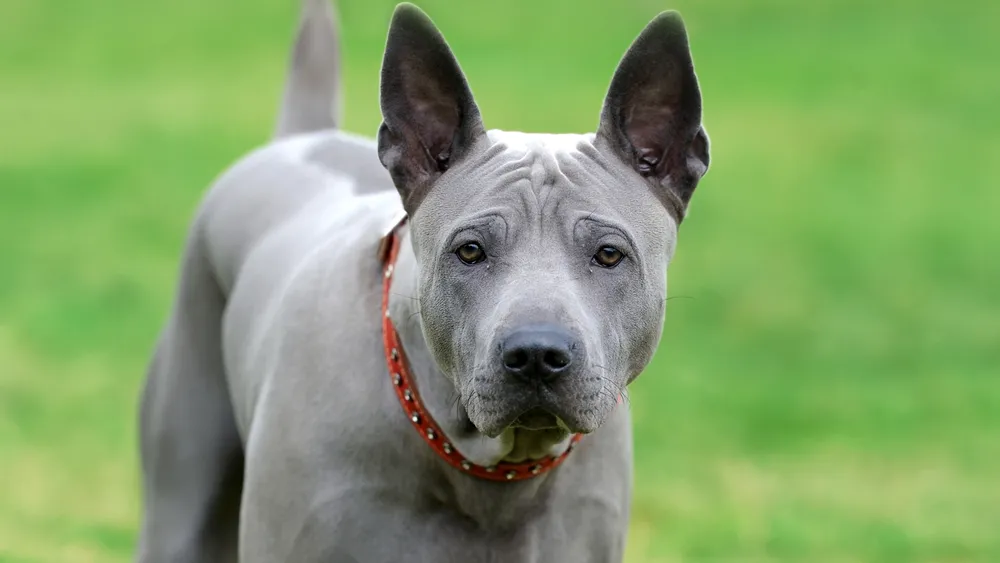
Prey Drive and Hunting Instincts
The Thai Ridgeback is a natural hunter with a high prey drive. They were originally bred to hunt small game and protect their owners' property. As a result, they may tend to chase after small animals, such as squirrels or rabbits. It is important to keep them on a leash or in a secure area to prevent them from running off after prey.
In summary, the Thai Ridgeback is a loyal, intelligent, and protective pet with a high prey drive and natural hunting instincts. Proper socialization and training can help them become well-behaved and obedient pets. However, they may not do well with cats or other small animals due to their high prey drive.
Health and Care
Common Health Problems
Like all breeds, Thai Ridgebacks are prone to certain health issues. Dermoid sinus is a genetic condition that affects the breed, which is a tube-like opening that runs under the skin and can become infected. It is important to have a veterinarian check for this condition in puppies. Hip dysplasia is another health issue that can affect the breed, which is a malformation of the hip joint that can lead to arthritis and pain. Regular vet check-ups can help detect and manage these issues.
Grooming Needs
Thai Ridgebacks have a short, smooth coat that requires minimal grooming. Brushing once a week with a soft-bristled brush can help remove loose hair and keep their coat shiny. They do shed seasonally, so more frequent brushing may be necessary during those times. Bathing should be done as needed, but not too frequently as it can strip the coat of its natural oils.
Diet and Nutrition
A healthy diet is important for Thai Ridgebacks to maintain their overall health and well-being. Feeding them high-quality dog food that is appropriate for their age and activity level is recommended. Overfeeding and obesity can lead to health problems, so it is important to monitor their food intake and provide regular exercise.
Overall, with proper care and attention to their health needs, Thai Ridgebacks can live long and healthy lives. Regular vet check-ups, proper grooming, and a balanced diet are key components of their care.

Training and Exercise
Training Techniques
Thai Ridgebacks are intelligent and independent dogs, which can make training a bit challenging. However, with patience and consistency, they can be trained effectively. Positive reinforcement techniques such as treats, praise, and playtime can work well with these dogs. Harsh training methods or physical punishment should be avoided as they can damage the dog's trust and confidence.
Obedience training is essential for Thai Ridgebacks as they can be stubborn and may try to assert their dominance. Consistent training can help establish control and prevent unwanted behaviors such as jumping, digging, or chewing. Socialization is also crucial to prevent aggression towards other dogs or strangers.
Exercise Requirements
Thai Ridgebacks are high-energy dogs that require daily exercise to maintain their physical and mental well-being. They enjoy activities such as running, hiking, and playing fetch. A lack of exercise can lead to boredom and destructive behavior.
The amount of exercise required depends on the dog's age, health, and energy level. As a general rule, adult Thai Ridgebacks should have at least 30-60 minutes of exercise per day. Puppies and seniors may require less exercise, but it should still be provided regularly.
Owners should also be aware of the weather conditions when exercising their Thai Ridgebacks. These dogs are sensitive to heat and may overheat quickly in hot weather. It's important to provide plenty of water and shade during outdoor activities.
In summary, Thai Ridgebacks require consistent and positive training techniques to establish control and prevent unwanted behaviors. They also need daily exercise to maintain their physical and mental health. Owners should be patient and consistent with their training and exercise routines to ensure a happy and healthy dog.
Breeding and Puppies
Choosing a Breeder
When looking for a Thai Ridgeback breeder, it is important to do thorough research to ensure that you are getting a healthy and well-bred puppy. Reputable breeders will be happy to answer any questions you may have and provide you with health clearances for both the parents and the puppies. It is recommended to visit the breeder's facilities and meet the parents of the litter to get an idea of their temperament and overall health.
Puppy Care and Early Development
Thai Ridgeback puppies require proper care and socialization in their early development stages to ensure they grow up to be well-adjusted and obedient adults. It is important to provide them with a comfortable and safe environment, proper nutrition, and regular veterinary check-ups. Socialization should begin as early as possible, exposing the puppy to a variety of people, animals, and environments to help them develop confidence and reduce the risk of fear-based aggression.
Training is also an important aspect of puppy development. Positive reinforcement techniques should be used to teach basic obedience commands and proper behavior. Consistency and patience are key when training a Thai Ridgeback puppy, as they can be independent and stubborn at times.
When adopting a Thai Ridgeback puppy, it is important to understand the breed's unique characteristics and needs. Proper care and training will ensure that your puppy grows up to be a happy and well-behaved companion.

Physical Features
The Thai Ridgeback is a medium-sized muscular dog breed that is known for its distinctive ridge of hair that runs down its back. This breed has a short, smooth coat that is easy to maintain and comes in a variety of colors.
Coat and Colors
The Thai Ridgeback's coat is short and dense, with a glossy sheen. The coat comes in a variety of colors, including red, black, blue, and fawn. Some Thai Ridgebacks may also have a brindle pattern on their coat. The coat is easy to maintain and requires minimal grooming.
Distinctive Traits
One of the most distinctive traits of the Thai Ridgeback is the ridge of hair that runs down its back. The ridge is formed by the hair growing in the opposite direction to the rest of the coat, and it can be felt when running one's hand down the dog's back. This trait is unique to the Thai Ridgeback and sets it apart from other breeds.
The Thai Ridgeback also has prick ears that stand up straight, giving it an alert and attentive appearance. The tail is thick at the base and tapers to a point, and it is usually carried high when the dog is alert or excited.
Overall, the Thai Ridgeback is a striking and unique breed with a short, easy-to-maintain coat and distinctive physical traits that make it stand out from other breeds.
Breed Comparisons
Similar Breeds
Thai Ridgebacks are often compared to other breeds with similar physical characteristics, such as the Rhodesian Ridgeback and the Phu Quoc Ridgeback. However, while these breeds share some similarities with the Thai Ridgeback, they also have distinct differences.
The Rhodesian Ridgeback, for example, is a larger breed with a more muscular build and a distinctive ridge of hair along its back. In contrast, the Thai Ridgeback is smaller and more agile, with a leaner build and a shorter coat.
Similarly, the Phu Quoc Ridgeback shares some physical similarities with the Thai Ridgeback, such as its short, smooth coat and muscular build. However, the Phu Quoc Ridgeback is a rarer breed and is not as well-known or widely recognized as the Thai Ridgeback.
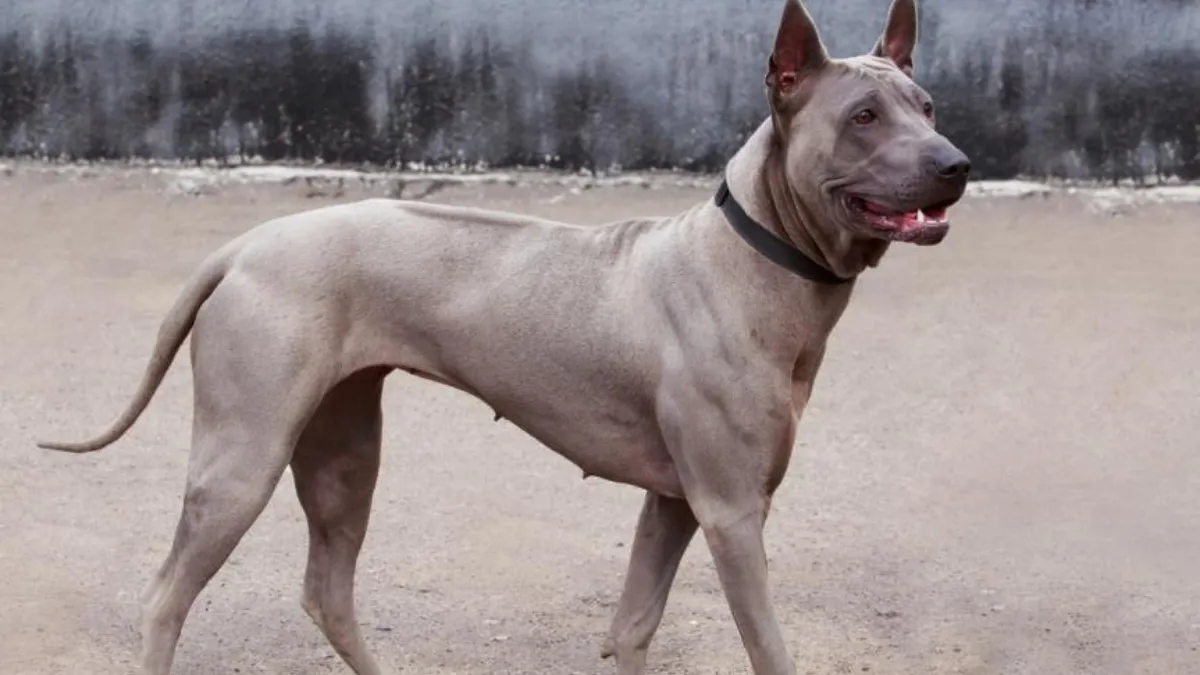
Breed Group and Recognition
The Thai Ridgeback is classified as a member of the Hound group by the American Kennel Club (AKC). This group includes breeds that were originally developed for hunting, such as the Beagle and the Greyhound.
While the Thai Ridgeback is not as well-known as some other breeds in the Hound group, it has gained recognition in recent years. In 1993, the Thai Ridgeback was officially recognized by the United Kennel Club (UKC), and it was later recognized by the AKC in 2022.
Overall, the Thai Ridgeback is a unique and distinctive breed that stands out from other breeds in the Hound group. With its lean build, short coat, and distinctive ridge of hair along its back, the Thai Ridgeback is a breed that is sure to turn heads and capture the hearts of dog lovers everywhere.
Ownership Considerations
When considering owning a Thai Ridgeback, there are several important factors to take into account. This section will cover the suitability of this breed for families and their lifestyle adaptability.
Suitability for Families
Thai Ridgebacks can make great family pets, but they may not be the best choice for every family. They are loyal and protective of their families, but they can also be reserved with strangers. This means that early socialization is important to ensure that they are comfortable around new people and situations.
When it comes to children, Thai Ridgebacks can be good with older children who understand how to interact with dogs. However, they may not be the best choice for families with young children, as they can be high-energy and may accidentally knock over or injure a small child. It is important to always supervise interactions between children and dogs to ensure that both are safe.
Lifestyle Adaptability
Thai Ridgebacks are active dogs and require regular exercise to stay healthy and happy. They are not well-suited for apartment living and do best in homes with a yard where they can run and play. They also require mental stimulation, so owners should be prepared to provide them with toys and activities to keep them occupied.
As guard dogs, Thai Ridgebacks can be protective of their property and family. However, they can also be trained to be good watchdogs without being overly aggressive. It is important to socialize them early and train them consistently to ensure that they are well-behaved and obedient.
When it comes to leash training, Thai Ridgebacks can be strong-willed and may require extra patience and consistency. It is important to start leash training early and to use positive reinforcement methods.

Overall, Thai Ridgebacks can make great pets for the right family. They are loyal, protective, and active, but they may not be the best choice for every household. Prospective owners should carefully consider their lifestyle and needs before bringing home a Thai Ridgeback.
Conclusion:
In conclusion, the Thai Ridgeback is a fascinating breed of dog that has been around for centuries. With a lifespan of 10-12 years, they are a relatively healthy breed that requires minimal grooming.
Although they are considered rare outside of Thailand, their popularity is growing in other parts of the world. This is due to their unique appearance, loyal nature, and athletic abilities.
When considering adopting a Thai Ridgeback, it is important to do research and find a reputable breeder. Additionally, proper training and socialization are crucial for this breed to thrive in a household environment.
Overall, the Thai Ridgeback is a wonderful companion for those who are willing to put in the time and effort to care for them properly.
Want to learn about rare dog breeds?
